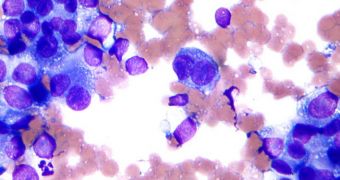Researchers have recently determined that it is possible to use DNA repair capacity (DRC) readings to detect whether a person is at high risk of developing non-melanoma skin cancer or not.
The discovery is very important, because it represents the start of a new approach in detecting the condition early on, before it gets a chance to set in. The tests are relatively simple to conduct.
One of the most important things that were discovered is that the new method could be used to scout the effectiveness of preemptive therapies that physicians recommend upon detecting skin cancer in its earliest stages.
Details of the research that led to the new results were presented recently at the Third American Association for Cancer Research (AACR) Conference on the Science of Cancer Health Disparities.
“Our study showed that persons with low DRC have three times greater likelihood of having non-melanoma skin cancer as compared to those with high DRC,” explained Manuel Bayona, MD, PhD.
The expert went on to say that DRC can be characterized as a very complex cellular mechanism, which is used to repair whatever damage DNA inside cells may suffer.
Given that more than 200 proteins are involved in this process, it stands to reason that it is very complex, added Bayona, who is a professor with the Public Health Program at the Ponce School of Medicine, in Puerto Rico.
“Doctors could use DRC levels to monitor how non-melanoma skin cancer risk decreases in individuals taking cancer preventive therapies,” the scientist went on to say.
But the study also made another important discovery. While compensating for the other factors that might have skewed the results, the experts noticed a strange correlation.
People who did not take aspirin or supplementary vitamins, or who did not wear sunblock, were at increased odds of developing skin cancer later on.
This stands to reason in light of the discoveries, given that ultraviolet (UV) light in sunlight is one of the main factors that triggers DNA mutation and damage.
If the DRC is low in people who do not use these protective measures, then they stand a very high chance of developing skin cancer sometime in their lives.
The good news is that following a few common-sense, simple steps may result in a greater protection against this terrible disease.

 14 DAY TRIAL //
14 DAY TRIAL //